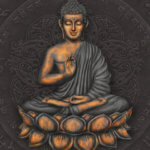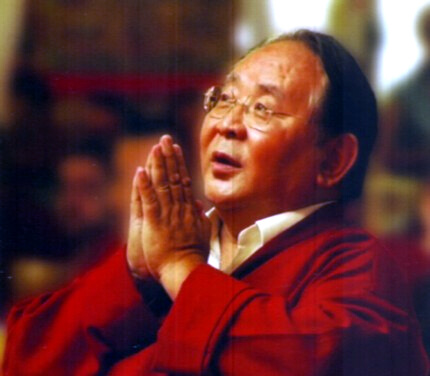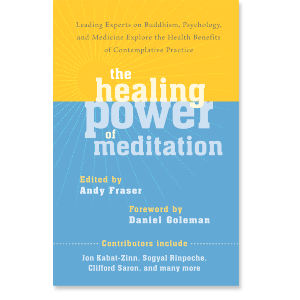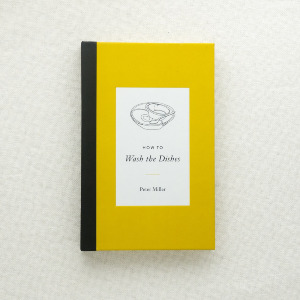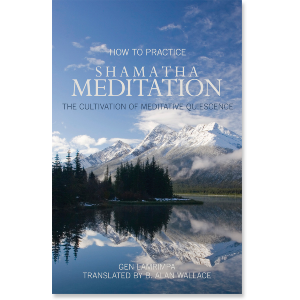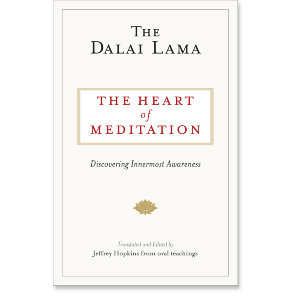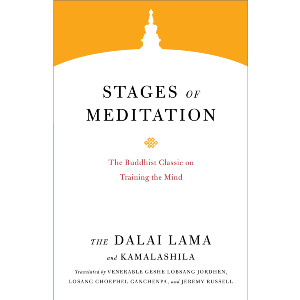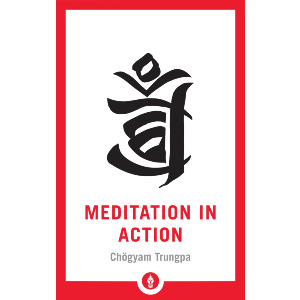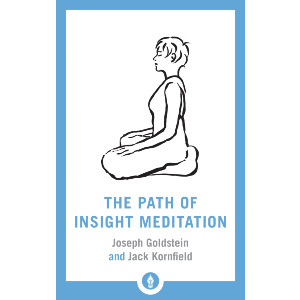| The following article is from the Autumn, 1987 issue of the Snow Lion Newsletter and is for historical reference only. You can see this in context of the original newsletter here. |
Essential Advice On Meditation Practice
from Sogyal Rinpoche
It is as well to recognize that when you start on meditation practice, you are entering a totally different dimension of reality.
The following excerpts are from Teachings by Sogyal Rinpoche:
How can we connect with our heart essence?
When you read books about meditation, or often when meditation is presented by different groups, much of the emphasis falls on the techniques.
Posture v.s Technology
In the West, people tend to be very interested in the technology of meditation. However, by far the most important feature of meditation is not the technique, but the way of being, the spirit, which is called the posture, a posture which is not so much physical, but more to do with spirit or attitude.
The whole point of meditation is to get used to that aspect which you have forgotten.
It is as well to recognize that when you start on meditation practice, you are entering a totally different dimension of reality. Normally in life we put a great deal of effort into achieving things, and there is a lot of struggle involved, whereas meditation is just the opposite, it is a complete break from how we normally operate.
Sitting
Meditation is simply a question of being, of melting, like a piece of butter left in the sun. It has nothing to do with whether or not your know anything about it, in fact, each time you practice meditation it should be fresh, as if it were happening for the very first time.
You just quietly sit, your body still, your speech silent, your mind at ease, and allow thoughts to come and go, without letting them play havoc on you.
When you begin to practice, you center yourself, in touch with your soft spot, and just remain there.
Watch the Breath
If you do need something to do, then watch the breathing.
This is a very simple process. When you are breathing out, know that you are breathing out. When you breathe in, know that you are breathing in, without supplying any kind of extra commentary or internalized mental gossip, but just identifying with the breath.
That very simple process of mindfulness processes your thoughts and emotions, and then, like an old skin being shed, something is peeled off and freed.
relax from within
Real Relaxation
Usually people tend to relax the body by concentrating on different parts. Real relaxation comes when you relax from within, for then everything else will ease itself out quite naturally.
When you begin to practice, you center yourself, in touch with your soft spot, and just remain there.
You need not focus on anything in particular to begin with. Just be spacious, and allow thoughts and emotions to settle. If you do so, then later, when you start to use a method such as watching the breath, your attention will more easily be on your breathing.
There is no particular point on the breath on which you need to focus, it is simply the process of breathing. Twenty-five percent of your attention is on the breath, and seventy-five percent is relaxed. Try to actually identify with the breathing, rather than just watching it.
Think of yourself as the sky, holding the whole universe.
Visualizations
You may also choose an object, like a flower, for example, to focus upon. Sometimes you are taught to visualize a light on the forehead, or in the heart. Sometimes a sound or mantra can be used. But at the beginning it is best to simply be spacious, like the sky. Think of yourself as the sky, holding the whole universe.
allow all your discordant self with its ungenuineness and unnaturalness to dissolve
Just Sit
When you sit, let things settle and allow all your discordant self with its ungenuineness and unnaturalness to dissolve, out of that rises your real being. You experience an aspect of yourself which is more genuine and more authentic–the real you.
As you go deeper, you begin to discover and connect with your fundamental goodness.
The whole point of meditation is to get used to that aspect which you have forgotten.
In Tibetan "meditation" means "getting used to." Getting used to what? to your true nature, your Buddha nature. This is why, in the highest teaching of Buddhism, Dzogchen, you are told to rest in the nature of mind.
You just quietly sit and let all thoughts and concepts dissolve. It is like when the clouds dissolve or the mist evaporates, to reveal the clear sky and the sun shining down. When everything dissolves like this, you begin to experience your true nature, to live. Then you know it, and in that moment, you feel really good.
It is unlike any other feeling of well-being you might have experienced. This is a real and genuine goodness, in which you feel a deep sense of peace, contentment and confidence about yourself.
the best moments of the mind are early in the day
When is the best time to meditate?
It is good to meditate when you feel inspired. Early mornings can bring that inspiration, as the best moments of the mind are early in the day, when the mind is calmer and fresher (the time traditionally recommended is before dawn).
It is more appropriate to sit when you are inspired, for not only is it easier then as you are in a better frame of mind for meditation, but you will also be more encouraged by the very practice that you do. This in turn will bring you more confidence in the practice, and later on you will even be able to practice when you are not so inspired.
There is no need to meditate for a long time; just remain quietly until you are a little open and able to connect with your heart essence. That is the main point.
After that, some integration, or meditation in action. Once your mindfulness has been awakened by your meditation, your mind is calm and your perception a little bit more coherent. Then whatever you do, you are present, right there.
As in the famous Zen master's saying:
"When I eat, I eat; when I sleep, I sleep."
Whatever you do, you are fully present in the act. Even washing dishes, if it is done one-pointedly, can be very energizing, freeing, cleansing, you are more peaceful, so you are more you. You assume the Universal You.
Good and bad are simply apparitions. . . you will develop stability and the real profoundness of meditation will take effect.
Perseverance
One of the fundamental points of the spiritual journey is to persevere while on the path. Though one's meditation may be good one day and not so good the next, like changes of scenery, essentially it is not the experiences, good or bad which count so much, but rather that when you persevere, the real practice rubs off on you and comes through both good and bad.
Good and bad are simply apparitions, just as there may be good or bad weather, yet the sky is always unchanging. If you persevere and have that sky-like attitude of spaciousness, without being perturbed by emotions and experiences, you will develop stability and the real profoundness of meditation will take effect.
You will find that gradually and almost unnoticed, your attitude begins to change. You do not hold onto things so solidly as before, or grasp at them so strongly, and though crises will still happen, you can handle them a bit better with more humor and ease. You will even be able to laugh at difficulties a little, since there is more space between you and them, and you are freer of yourself.
Things become less solid, slightly ridiculous, and you become more lighthearted.

